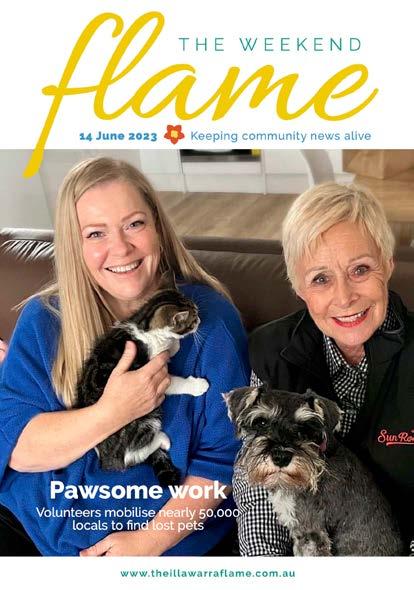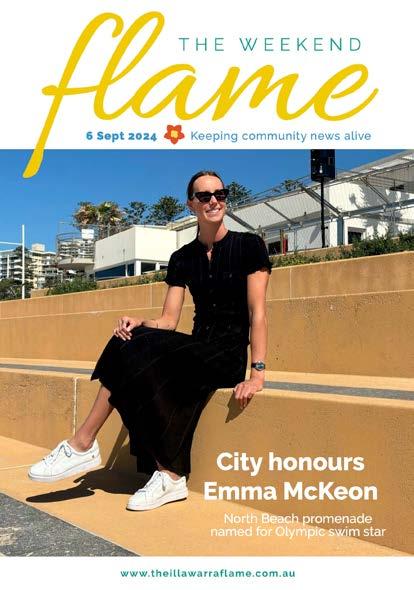




Helensburgh Lions’ annual fundraiser returns

Helensburgh Lions’ Country Fair Fair will be held in Charles Harper Park Helensburgh on Saturday, 26 October 2024 from 9am to 3pm.
The Fair’s official opening will be at 10am with entertainment to follow, including Helensburgh Public School Choir, Zumba Dance Demonstration, Chimera, ADA Dance Group, George Mann, Aubrey Purton Duo, Irish dancers and Sam Vukelic.
There’ll be face-painting, carnival rides, a petting farm and stalls selling food, arts and crafts, and displays by community organisations. The Rural Fire Service and Fire & Rescue will be back with their model helicopter and fire truck. Visit the Lions Stall for a sausage sandwich or bacon and egg roll, and buy a raffle ticket. You’ve got to be in it to win it! Your support helps us put on future events.
Last chance to see Bianca Hester’s exhibition
Lithic Bodies brings together new visual artwork by Bianca Hester developed during long-term engagement with the PermianTriassic ‘extinction line’ in the Illawarra coastal region on Wodi Wodi Dharawal land. Responding to the temporality of this location and its complex material entanglements, the project is an expanded sculptural investigation spanning objects, images, video, text and walking.
The closing event is on Sunday, 27 October – Deeptime Coastline Symposium. From 2-4pm at Clifton School of Arts, 338 Lawrence Hargrave Drive, Clifton.
The event will include a Welcome to Country and smoking ceremony with Uncle Peter Button. On the Panel: Matt Poll, Tyson Antonio Frigo, Peter Hewitt, Nicole Smede, Tara
Djokic, Brian Jones, Bianca Hester, Bronwyn Bailey-Charteris. This is a free event. Visit Bianca’s website for more information.

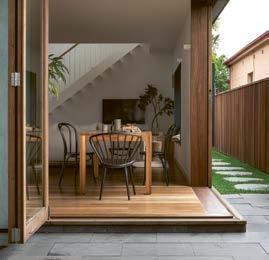


By Amanda De George

“It was a bookedout event. It was like a rock concert. People were contacting me at all hours of the night saying, ‘Can I get a ticket?”
– Christie Peters CONTACT
Christie (0412 497 312) or ANBA
Any doubt that the Illawarra was full of native bee enthusiasts was put to rest after October 12’s sold-out stingless bee workshop with entomologist Dr Tim Heard and the successful launch of the Illawarra branch of the Native Bee Association.
More than 50 people attended the event in Thirroul and it was all thanks to the hard work of local beekeeper Christie Peters, who said: “It was a booked-out event. It was like a rock concert. People were contacting me at all hours of the night saying, ‘Can I get a ticket?’”
There are 2000 species of native bees in Australia. “If you compare that to birds, there’s only 800 [bird] species in Australia,” Dr Heard told us.
The former CSIRO research scientist has written the book, literally, on stingless bees. The Australian Native Bee Book takes the reader through the ins and outs of keeping stingless bees, from their anatomy and life cycle to the hierarchy of the hive, and Tim touched on these topics during the morning.
Christie, who added a hive of stingless bees to her menagerie just over a year ago, had spent almost as long going back and forth with Tim, convincing him to travel down from his home in Queensland, where he keeps over 500 hives and runs Sugarbag Bees.
The Sugarbag Bee (Tetragonula
carbonaria), as cute as the name sounds delicious, is a sub-tropical species that occurs naturally from North Queensland down to around Bega. While they are a relatively easy species to keep, Tim said of having a hive in the Illawarra region, “You are getting close to the margins and everything works a little slower here.”
That means that while small amounts of honey are created in a stingless bee hive, it may not be advisable to take it for your toast, as the bees will likely need most of it. It also meant that to prevent stress on the bees, the planned demonstration of splitting Christie’s hive had to be postponed as the day was overcast and chilly.
A motion was passed to create the Illawarra’s own branch of the Australian Native Bee Association (ANBA) and an executive voted in, creating a space where locals can learn from each other.
“I found that when I did get my hive, there wasn’t a lot of people in the area I could contact and I thought that if we formed a group down here people that are having struggling hives or have lost a hive, we could band together and help each other so that our hives do survive,” Christie said.
“I’d like to see more hives get out to schools and into parks and just have a lot more awareness down here about our beautiful native stingless bees.”

By Zachary Houtenville
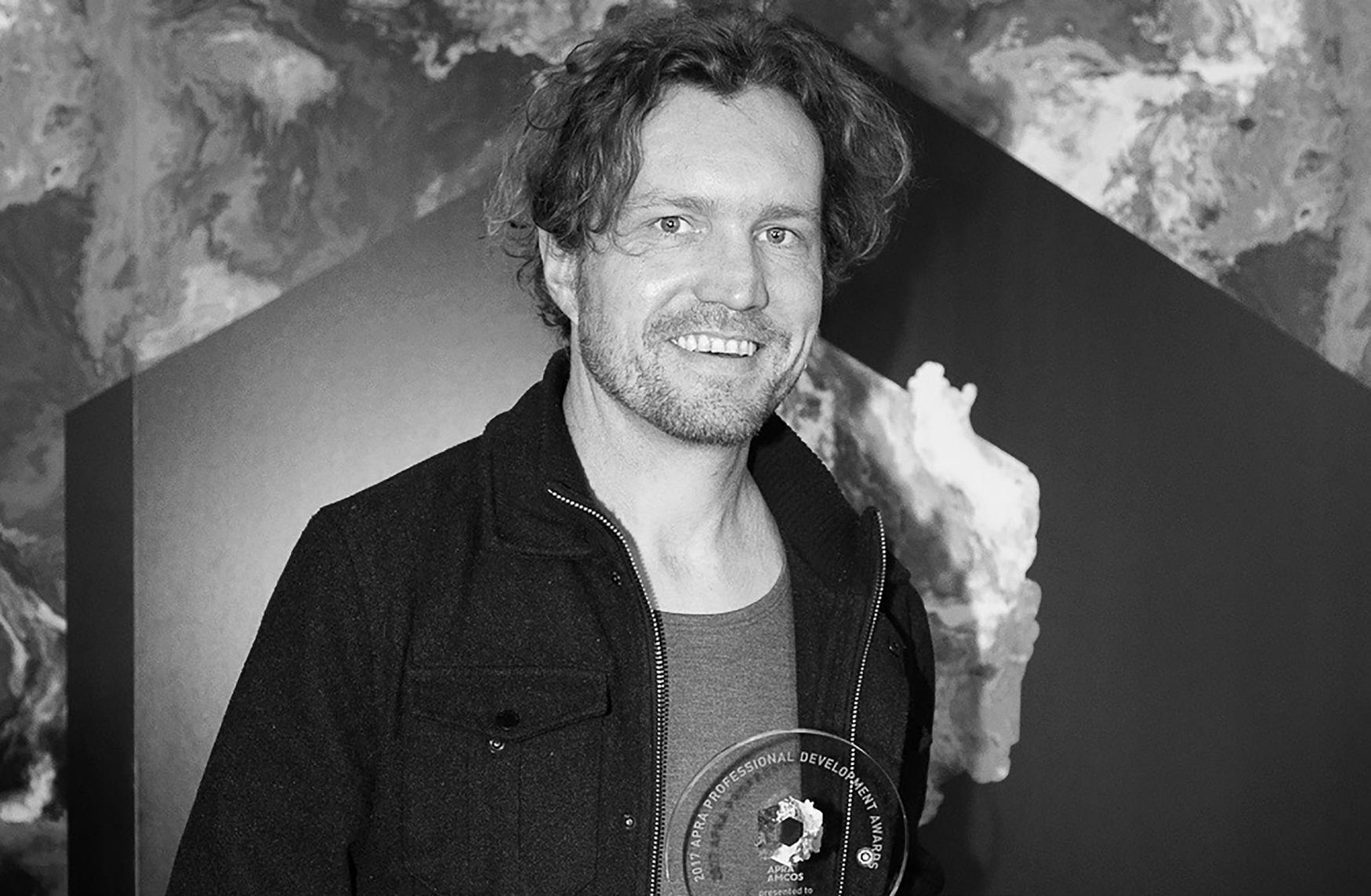
Musicians dreaming of breaking into the world of film and television will have a chance to learn from an award-winning composer this Saturday.
Damien Lane will be leading Screen Illawarra’s Composing for Screen workshop, alongside fellow composer and sound artist Brent Williams from 10am to 1pm tomorrow, October 26, at Wollongong Town Hall’s Music Lounge.
Book the Composing for Screen workshop
The workshop will feature multimedia presentations, including clips from the speakers’ work, as well as insights into how music enhances narrative and factual storytelling in film. Directors and editors will also benefit from exploring the powerful role of music.
“It’ll be a bit of an overview about how
the industry works and also the craft of composing to screen,” Damien said.
Damien has built a career composing for film and television, while also working as a producer, songwriter and arranger. He has contributed to award-winning productions, taking home his first screen music award in 2015 for Best Music for a Short Film for 1919 and an AACTA Award for Best Original Score in a Documentary with Caitlin Yeo for The Dark Emu Story. More recently, Damien was nominated for a Screen Music Award for Carry You. He wrote this with fellow composers Amanda Brown and David Leha, otherwise known as Radical Son, for Channel 7 series, RFDS (Royal Flying Doctor Service).
“It’s an honour to be recognised for it,” Damien said.
“It sort of came out of nowhere, we didn’t know that we were going to be writing a song and then suddenly we were.
“It’s exciting to be nominated, it always is.”
As a teenager, Damien played in bands and his early childhood was also steeped in music. At age six, he learned the trumpet, his only formally trained instrument, but he alson found joy experimenting with other instruments around the house.
“We had instruments around our house like a piano and the guitar,” Damien said.
“Then my sister got a drum kit, so I just used to work out how to play songs on them and that’s kind of how I taught myself most of the things that I learned.”
Despite his passion for music, Damien didn’t enter the industry until his 30s, graduating from the Australian Film, Television and Radio School (AFTRS) in 2011. He grew in the industry through his experience working with other acclaimed composers, such as Amanda Brown and Caitlyn Yeo.
“One of the first things I ever learned when I started working alongside other composers was that you have to learn to work really quickly,” Damien said.
“You can’t really spend hours or days fiddling with things just because you want them to be perfect, and they still need to be perfect.
“You just have to learn how to do it and be able to generate a lot of music very quickly.”
A successful career hasn’t come without challenges. Alongside managing time and stress, Damien, like any artist, has had to accept that he won’t always please everyone.
“Music is a notoriously difficult thing to communicate about,” Damien said.
“There’s a lot of things going on in terms of the volume of work that you’re doing.”
Having relocated to Wollongong last year, Damien is eager to engage with Screen Illawarra and connect with the region’s talented professionals.
“It does feel like a growing sort of scene around here, and I know that a lot of filmmakers have moved to the Illawarra from Sydney,” he said.
Damien recently finished scoring the documentary Aquarius, which premiered at Sydney Film Festival, and is now working on another feature documentary, set to be released in 2025.
The workshop will be at The Music Lounge, Wollongong Town Hall, corner of Crown St & Kembla St Wollongong. When: Saturday 26th October, 10am - 2pm. Doors open 30 mins prior to the event for people to arrive, get a drink and mingle.
Cost: $15 for Screen Illawarra members. To buy tickets, click here.
“One of the first things I ever learned when I started working alongside other composers was that you have to learn to work really quickly. You can’t really spend hours or days fiddling with things just because you want them to be perfect, and they still need to be perfect.”
– Damien Lane

By Jeremy Lasek

“The relationship between food, water and energy is delicate and demand is growing. It is a crux of our way of life.”
– Professor Karen Charlton
Therehasn’t been a lot to celebrate at the University of Wollongong (UOW) in recent times as it battles serious budget challenges. That changed briefly during the recent Global Climate Change Week when the university released its 2023 Sustainability Report showing the growing contribution UOW is making towards protecting and restoring the environment, and to creating a more equitable and healthy society.
Wollongong helped develop the original Global Climate Change Week concept in 2014, with UOW’s Dr Keith Horton encouraging academics, students and staff at universities, in all disciplines and countries, to engage with each other, their communities and policy makers on climate change action and solutions.
During 2024’s Global Climate Change Week, the focus at UOW was on sustainable food systems, featuring five days of discussions, seminars and climate action events under the theme: ‘The Food-Water-Energy Nexus.’
UOW’s Karen Charlton, a Professor of Nutrition and Dietetics, said the ‘Food-Water-Energy Nexus’ focuses on how humans have an ever-increasing demand for food, water and energy.
“The relationship between food, water and energy is delicate and demand is growing. It is a crux of our way of life,”
she said. “Every single person on Earth deserves access to sustainable and healthy food, fresh water, and a roof over their heads.”
On Wednesday, 16 October, one of the week’s highlights was an Agroecology Dialogue at UOW’s Innovation Campus. The workshop gave people the chance to connect with farmers, First Peoples and activists to discuss how everyone can play a part in creating more sustainable, community-driven food systems.
Karen said every resident can make a positive difference. “By embracing eco-friendly choices and demanding change from our leaders we can create a ripple effect that inspires others.”
She provided some practical tips for how locals can “make a difference”.
“Eat seasonally. Eat what’s in season that’s grown at the right time of the year.
“Connect with local food networks like those who do monthly crop swaps.
“Look at having a meat-free meal at least once a week; less red meat and more chicken. I’m not suggesting everyone should become vegan but we should choose to eat meat that’s produced in a more sustainable way.
“What is good for human health is good for the planet’s health. As we export 70 per cent of the food we grow, we have a global responsibility that the food we produce isn’t harming individuals.”


By Oguzhan Dincsoy

“Folks are remarkably generous with what they bring to the table”
– Sarah Anderson
Bulliresidents are spearheading an ever-growing crop-swapping movement by exchanging goodies from their gardens and pantries.
At 2pm on the first Saturday of every month, people gather for a crop swap at Millers’ Local Bakehouse.
The founder and head grower of Popes Produce, Sarah Anderson coordinates the Bulli Crop Swap with Emma Huber, owner of Millers’ Local Bakehouse, and Suzy Pickles from Saltbush Projects, and FoodTalks Illawarra.
Thanks to a background in produce, as well as working as a small-scale market gardener and a school garden coordinator, Sarah always has produce on her mind and at her fingertips.
“We decided with our shared passion of super fresh produce and social gatherings that we should start a crop swap,” Sarah said.
Locals spend an hour each month swapping a variety of items, such as their own fresh produce, seedlings, propagated plants, seeds, preserves, ferments, hand scrubs and flowers.
“Watching what a seed can become and the possibilities of growing food for ourselves, what the flavour difference can be is so rewarding,” Sarah said.
“Folks are remarkably generous with what they bring to the table.”
The crop swap aims to encourage people to garden and make new things; help the environment; stop food waste; teach self-sustainability; be less reliant on shopping; and decrease or stop pesticide and chemical use in home gardens.
Sarah said it also has a social side, uniting people with a common interest.
“We all have surplus produce and goods from our gardens every now and again and a crop swap is a beautiful free initiative to generate conversations and share knowledge within our communities,” she said.
“We started predominantly with the notion to provide a space for people to come together with a shared passion, and start each swap with an introduction of ourselves and what we’ve brought with us.
“When it’s something more unusual, the explanation from the provider can include uses and growing tips.”
The crop swap helps foster community spirit and improve mental health.
“There are always multiple benefits, the first being how thankful we feel that this kind of no fuss event exists and is open to all,” Sarah said.
“We also get to always walk away with such abundance – marmalades, jams, seeds for the season, preserved olives… just to name a few.”
By Melissa Burns

Theauthor of The Life and Myth of Charmian Clift (HarperCollins 2000), Nadia Wheatley is a distinguished writer with over 40 years of experience in publishing award-winning works across fiction, history, and biography. Her passion for storytelling and historical exploration has led to diverse and impactful work.
In the documentary Life Burns High, Nadia captures the charisma and appeal of journalist Charmian Clift. The film delves into what made this outspoken, unconventional free spirit so adored by readers of her weekly column in the Sydney Morning Herald.
A special True Story Festival screening of Life Burns High will be held on Friday, 15 November, 6:30-8:30pm. Following
the screening, film co-producer Sue Milliken will join Nadia and Caroline Baum to discuss her insights and reflections on Charmian Clift’s enduring legacy.
What inspired you to write the book you’ll be speaking about at the True Story Festival? I didn’t set out to write a biography of Charmian Clift: I was bequeathed the project by her elder son, Martin Johnston, with whom I lived in Sydney and Greece in the 1970s. Published in 2000, the book won a couple of major awards, then seemed to disappear. But 55 years after her death, Clift is having an amazing revival – evident in new
publications of her work, and in the documentary Life Burns High
What is it about author
Charmian Clift that keeps attracting new readers?
Charmian Clift (1923-1969) was ahead of her time as a woman, and as a writer. In her ‘sneaky little revolutions’ (as Clift called her weekly newspaper column pieces) she supported the rights of women and ‘migrants’, called for social justice for Aboriginal and Torres Strait Islander people, opposed conscription and the war in Vietnam, acknowledged Australia’s role in the Asia-Pacific, fought censorship, called for a local film industry — and much more. In doing so, she set a new benchmark for the form of the essay in Australian literature.
What was your role in the documentary Life Burns High?
About 10 years ago, filmmaker Rachel Lane approached me with the idea of making a film about Charmian Clift, and she subsequently bought the rights to my biography. I was deeply impressed by the dedication, passion and integrity of Rachel Lane and her co-producer, Sue Milliken, and so I was happy to be available throughout the project as what Rachel calls ‘a walking encyclopaedia of all things Clift’. It is their film.
Where do you get your ideas?
I never set out to find ideas for books
(whether fiction or nonfiction, and whether for adults or children), but occasionally a house or a piece of land will suddenly seem to speak to me. When that happens, I start drawing little maps and writing character-notes directly into the maps.
Once I have characters interacting with a place, I have a plot.
Your all-time favourite non-fiction book?
The Making of the English Working Class by E.P. Thompson changed my life. Published in 1963, this early example of ‘history from below’ sought to recognise the forgotten people of the Industrial Revolution, and to restore to them their dignity and their agency. After reading this book in 1968 – a time when I myself was involved in radical movements – I switched from studying English Literature to History.
True Story returns
To be held at Coledale Community Hall from November 15-17, True Story Festival will showcase of some of the best creative non-fiction writing in Australia today. This year’s theme, The State of Us, recognises what a complex and at times bruising year we’ve had. Artistic Director Caroline Baum has curated a series of conversations that prompts us to examine what we have in common rather than what divides us. Full program here
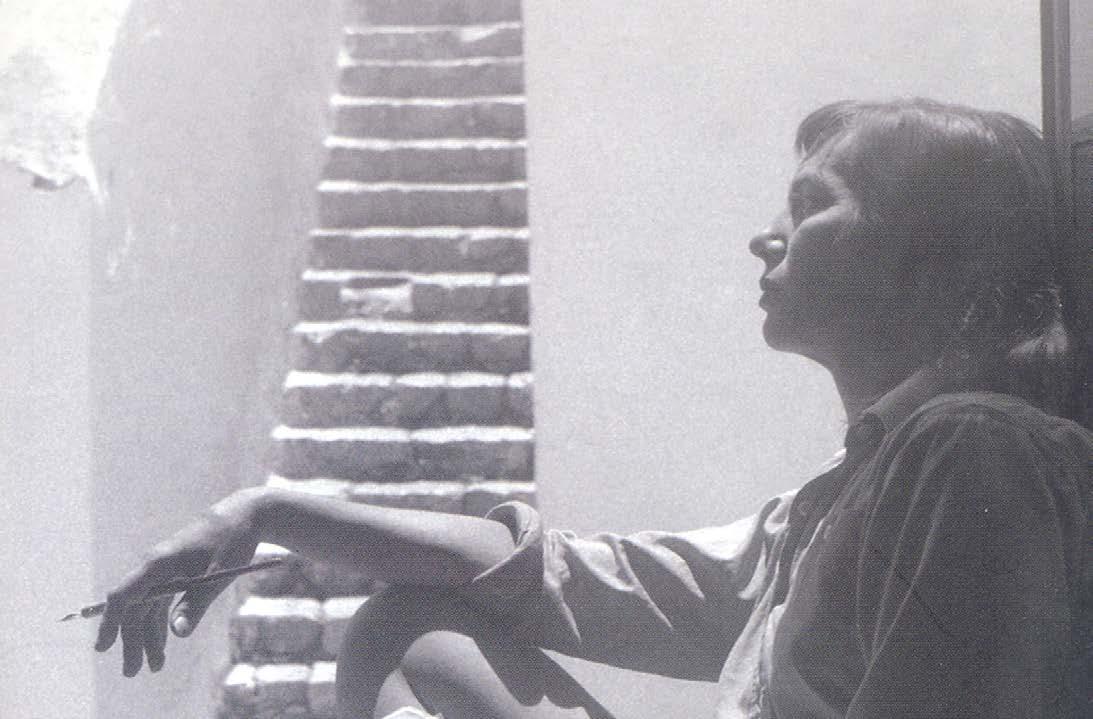
“Charmian Clift (1923-1969) was ahead of her time as a woman, and as a writer … she set a new benchmark for the form of the essay in Australian literature” – Nadia Wheatley
By Susan Luscombe

Natalie demonstrated each noodle dish (Pad Thai, Pad See Ew and Pad Kee Moa), revealing secrets of Thai ingredients and combinations as she cooked
Forlocal cooking classes, you can’t go past WEA Illawarra.
Operating continuously since 1913, WEA is an independent, communitybased not-for-profit offering adult education and leisure courses at affordable prices.
Natchanok (Natalie) Siriteerajads runs Thai cooking classes at the WEA centre in Auburn Street, Wollongong. Natalie has been with WEA for 13 years, beginning when the classes were held at Cedars Christian College. WEA cooking classes are now held in a purpose-built teaching kitchen next to the centre in Auburn St.
Natalie came to Wollongong from Thailand in 2000 to study at the University of Wollongong. After she completed her Masters in International Business, she returned to Thailand where she met her Australian husband. They moved back to Australia and Natalie gave birth to her daughter.
Besides teaching Thai cooking classes and raising a daughter, Natalie works
several days a week as an early childhood educator. She waitresses at night at two Illawarra Thai restaurants because “I like talking to people” and spends Tuesdays at the Buddhist monastery in Wilton, Bodhisaddha, cooking for the monks.
I joined a group of five keen amateur cooks for the Thai noodles class. Natalie demonstrated each noodle dish (Pad Thai, Pad See Ew and Pad Kee Moa), revealing secrets of Thai ingredients and combinations as she cooked. We tasted the freshly prepared meals and were then let loose to cook our own versions.
By following the detailed recipes and with personal tuition, we ended up with very good results. We filled our containers with our noodle dishes to share with family and friends, because there was a lot!
Natalie teaches two or three Thai cooking classes at WEA Illawarra per term. Look out for the classes during Term 4 – Thai Noodle dishes and Tasty Thai Curries.


By Philipa Tlaskal
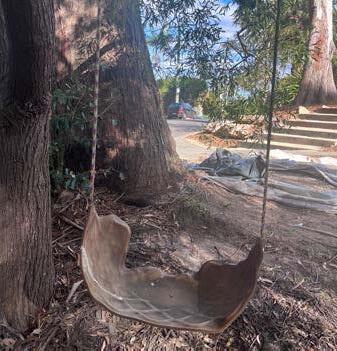
“I love working here and we have the most beautiful community.”
– Dr Trent Jansen
Fresh from the opening of his ‘Kurunpa Kunpu’ (Strong Spirit) exhibition as part of September’s London Design Festival, furniture designer Dr Trent Jansen hears voices.
The collectible furniture he creates with First Nations artists are ‘storytelling vessels’ that tell of the indigenous response to climate change.
With four works in Victoria’s National Gallery, Trent now appears to be passing on his talent. Today his young daughter is selling gum nuts and Venetian glass fragments on the driveway scrawled with her own chalk artwork.
A dad-designed swing made of rippled leather, crafted with saddler Johnny Nargoodah, swings in a gum tree in the front yard of his Thirroul home. Last year, the family returned from Venice where Trent (43) received the Venice Design Biennial internship.
As a co-curator of this weekend’s Illawarra Festival of Architecture and Design (IFAD), he will be opening up his studio, set in a secluded cul de sac, made of salvaged materials, its tin roof studded with solar panels. Trent is part of Electrify 2515, the groundbreaking project supported by Dr Saul Griffith that has won funding for a pilot electrification scheme to transform 500 homes. “I love working here and we have the most beautiful community,”
Trent says. “This electrification project reflects all our values.”
Visitors to his studio can see models for two extraordinary cabinets. One is the ‘Magistrato Al Sal Nero,’ a tribute to the black salt that built Venice’s wealth, just as the South Coast was once known as the Coal Coast. Jensen’s backyard is still littered with chunks of it. Then there is the ‘Manta Pilti’; composed of wooden panels channelling the drought-cracked earth of South Australia’s Indulkana, the country of his collaborator, Minyma Anangu woman Tanya Singer.
“I did Indigenous Studies for the HSC but not woodwork,” Trent says, smiling As Australia braces for another simmering summer, Trent has developed a course for the UNSW College of Fine Arts (COFA) called ‘Adaptive Design.’
This teaches emergency response design for flood, fire or cyclone. “My teaching work for UNSW COFA is an important strand of weaving my activist values with my work and response to climate change and it is a way to bring students on country to Thirroul.”
Trent and his partner, Amy, met working in remote communities in Fitzroy Crossing and Hermannsburg.
“Indigenous elders took us to special sites, storytelling the whole way. They have tales to warn children not to go into the forest. And we need to deeply listen.”
By Jeremy Lasek
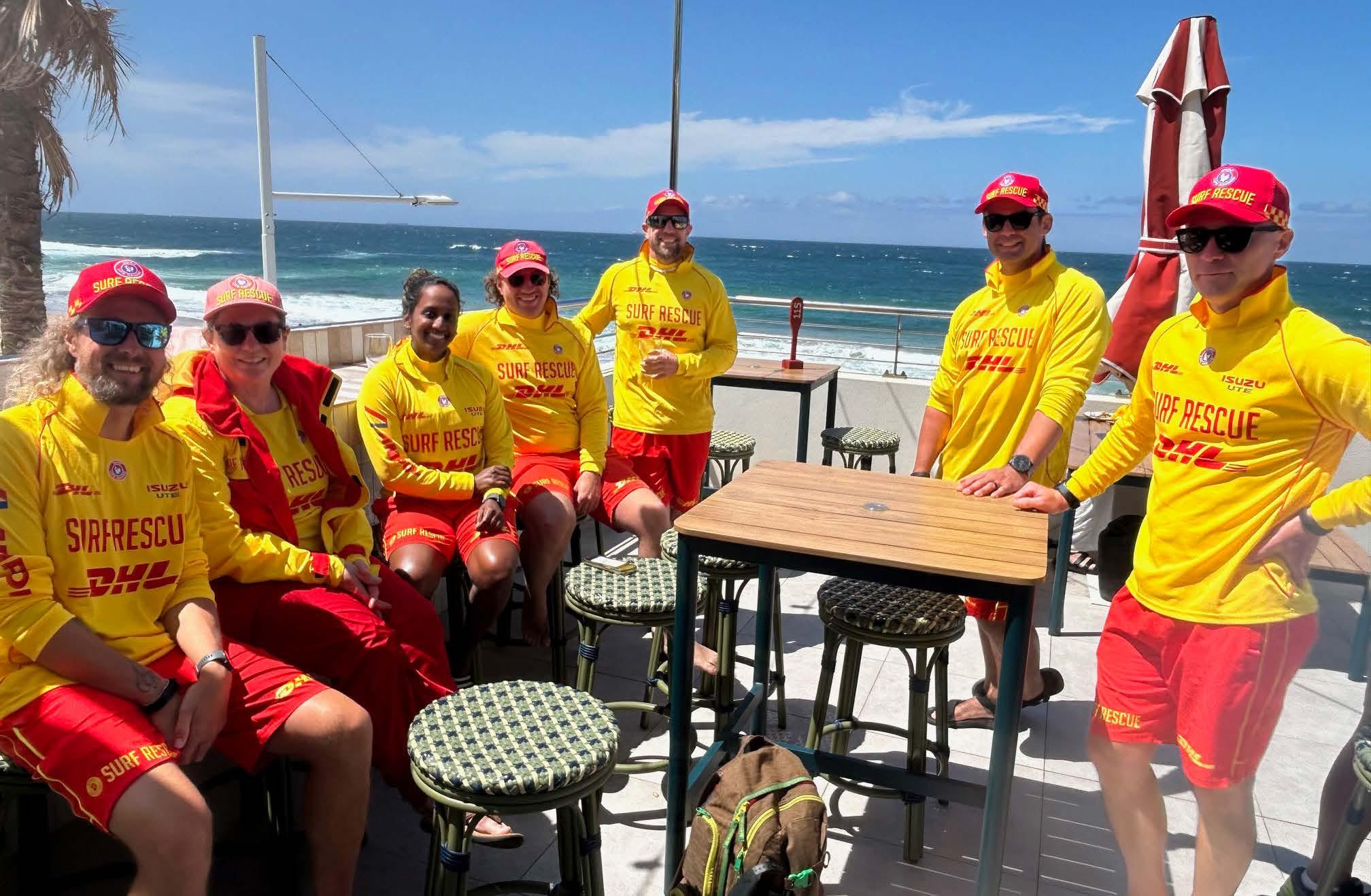
Wollongonghas been craving a place like this.” I have no idea who the bloke at the bar in front of me was but when he said this to me while watching a whale playing just beyond the surf break as his beer was being poured, I had to nod in agreement.
The Boathouse on North Wollongong Beach is officially open and all I can say is WOW! It’s casual but classy! It’s the latest venture for the Boathouse Group who pride themselves on creating memorable venues at iconic locations.
Enjoying the sunshine, the expansive balcony and the first of the venue’s daily 4-6pm happy hours on the opening afternoon, Wollongong local Hollie Green said, “It feels like I’ve gone somewhere else that’s not Wollongong.”
Her friend, Amelia Michalak from Port Kembla, said: “It’s just stunning. This is just what Wollongong’s needed.”
Thursdays are going to be huge at the Boathouse with a double happy hour (4-8pm). The food offerings are brilliant. For the super-casual diners, bar snacks include fried chicken sandwich ($15), smash cheeseburger ($18), salt and pepper squid ($19) and prawn rolls ($24). And there was a great mix of pizzas coming from the spectacular Italian pizza oven, a centrepiece of the open-plan kitchen.
We were lucky to score a corner table on a ‘booked out’ opening Friday night – and what a night it was. Just as service was beginning, the heavens opened up, sending the excited crowd on the
beachside balcony inside for shelter. No great drama there as the DJ was playing smooth grooves to help set the scene for those of us privileged to be there when this funky hot spot opened.
In fairness, we weren’t the first. As good neighbours do, the Boathouse team invited the North Gong surf club crew in the night before for what they call in the business a ‘soft opening’. There were more than 200 club members being spoilt rotten at what one described as a “night to remember”.
Twenty-four hours later was our night to remember. The restaurant was booked out and the staff were simply brilliant, making us all feel very special.
According to the head of commercial and marketing for the Boathouse Group, Ben Collis, the 70 full-time and casual staff are all “fantastic hospitality professionals... enthusiastic and passionate”. He paid tribute to the surf club for having the vision to do something special with what has been “an underutilised space”.
Heading up the team and creating a smart, affordable menu is Austinmer executive chef Mark LaBrooy, who fell in love with the location when he first visited earlier this year. “His eyes almost blew out of the back of his head when he saw it,” Ben said.
“The community has been so welcoming... Wollongong seems to have been screaming out for something like this,” he said, with the ‘house full’ signs up for the first two nights. “This iconic location is perfect for our brand. You can
literally jump off the balcony and on to the beach,” Ben said.
Tables with a fabulous view On Friday night our group stepped it up a little and were given the perfect corner table in the restaurant proper, with sweeping views across North Beach to the lighthouse. We mixed it up with tuna crudo ($16), tempura zucchini flowers ($16), grilled snapper ($42) and I devoured the succulent venison bush to beach (venison loin, king prawns, bearnaise sauce, salsa verde $46) with sides of watermelon salad ($9), grilled broccolini ($13) and fries ($8).
The food, the setting, the sunset and the staff – for an opening night, which can often be chaotic, this was seamless. Behind the bar, Thomas Dews and Emmi Burgess were blown away with the opening weekend vibe. “This is going to be a great place and it’s so good to be working in a place with such an amazing view,” Thomas said.
Glasgow-born Billy Connollysoundalike George McLean couldn’t make us feel more at home, keeping us thoroughly entertained.
Nicola Lindsay, who is normally Sydney-based, was thrilled to be part of the excitement. “I didn’t realise how beautiful Wollongong is. A lot of people are saying this is good for Wollongong, and it’s great to be a part of it.”
Hats off to the Boathouse team. That bloke at the bar is spot on. This city’s been craving something just like this for many, many years.

“This
is going to be a great place and it’s so good to be working in a place with such an amazing view”
– Thomas Dews
By Emma Rooksby of Growing Illawarra Natives
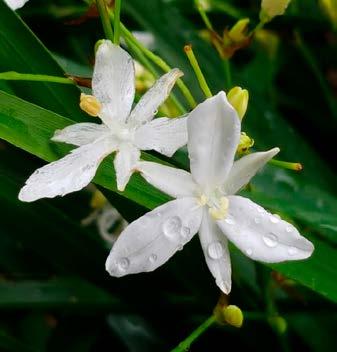
“Branching Grass-flag would be a wonderful addition to cottage gardens or edging beds in shady condition.” – Emma Rooksby
It’salways enjoyable to look around and see what local native plants are in flower. Right now, there’s such a floristic bounty on display it’s hard to choose a single plant to appreciate or to feature here. But my heart’s always gone out to the Branching Grass-flag (Libertia paniculata), a small strap-leaved plant in the Iris family (Iridaceae) that right now is covered in the prettiest little white flowers. So Branching Grass-flag gets a turn this week.
It occurs along the escarpment, generally in damp spots in wet sclerophyll forest dominated by tall eucalypts. I’ve seen it recently on Bulli Pass, flowering well, which makes it a lot more conspicuous than at other times of year.
Pictured below is an edging bed of Branching Grass Flag, showing the scrappy leaves and the overall habit of the plant. The flowers are not particularly
showy, but they are numerous and attractive. (Photo by Elena Martinez. ) Branching Grass-flag would be a wonderful addition to cottage gardens or edging beds in shady conditions. It is known to attract a range of butterflies, though I don’t yet have any photos showing particular species visiting.
For anyone who believes that it’s hard to find plants that will grow underneath eucalypts, this is an excellent option as long as there is a bit of shade and moisture available.
Pictured at left is an up-close view of the flowers of Branching Grass-flag, which resemble those of cultivated irises. (Photo by Elena Martinez.)
This plant is fairly widely available these days, particularly thanks to the Wollongong Botanic Garden GreenPlan Nursery, which has been cultivating it for a number of years.






Plan and prepare.

Be ready to act.
Most fires can be controlled. Fires can be dangerous.
Stay up to date and be ready to act if there is a fire.
There’s a heightened risk. Be alert for fires in your area.
Decide what you will do if a fire starts.
If a fire starts, your life and property may be at risk. The safest option is to avoid bush fire risk areas.
Take action now to protect your life and property.
Fires will spread quickly and be extremely dangerous.
These are dangerous fire conditions. Check your bush fire plan and that your property is fire ready.
If a fire starts, take immediate action. If you and your property are not prepared to the highest level, go to a safer location well before the fire impacts.
Reconsider travel through bush fire risk areas.




For your survival, leave bush fire risk areas.
If a fire starts and takes hold, lives are likely to be lost.
These are the most dangerous conditions for a fire. Your life may depend on the decisions you make, even before there is a fire.
Stay safe by going to a safer location early in the morning or the night before.
Homes cannot withstand fires in these conditions. You may not be able to leave and help may not be available.
By Jeremy Lasek, a journalist and news director at WIN from 1988-2000
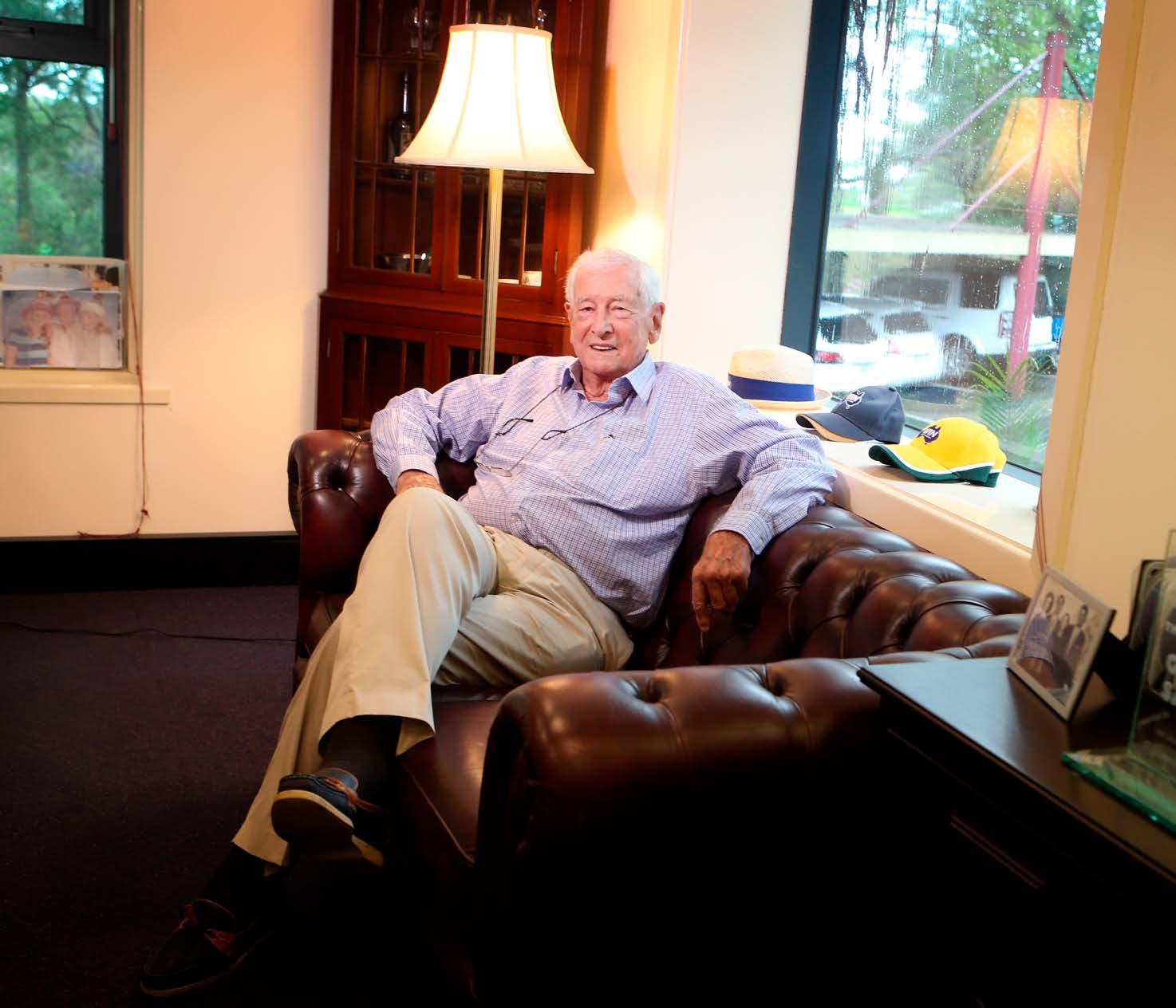
“He made it very clear he was pro news”
“When he took over in 1979, let’s face it, the station was in dire straits, and he completely turned it around.”
– Susie Elelman
Described by our new Lord Mayor as “a champion of Wollongong”, there’s possibly no individual in the Illawarra who’s had a greater influence over our lives in the past 50 years than Bruce Gordon. Yet many people have never heard of him – and that’s just the way he likes it.
It’s hard to believe, having helped launch the careers of dozens of Australia’s best-known television personalities, Bruce Gordon, owner of the WIN Television network since 1979, remains largely hidden from the public eye. But it wasn’t always like that.
In what Susie Elelman – one of Bruce’s favourite on-air presenters – describes as a “classic rags to riches story” he started
WIN television owner Bruce Gordon.
Photo: Sylvia Liber
his young life in suburban Sydney juggling fruit to attract customers to his father’s street-side fruit stall. That was just the beginning of the entertainment bug that has guided his entire working life and led to him creating a regional television juggernaut from a very humble beginning in Wollongong (but more on that later).
In his 20s, Bruce honed his magic skills, performing on stage at Sydney’s famous Tivoli Theatre, later taking on a management role there. In the process, he began rubbing shoulders with many of the heaviest hitters in the Australian media landscape, including Rupert Murdoch and the Packer family. While he may be publicity shy, Bruce
was never lacking in ambition. In the early 1960s he was a television sales executive in Australia before heading overseas where he joined Paramount in Hollywood, selling programs and films across the globe in a jet-setting lifestyle.
While the world was his oyster, Bruce always had an eye on new opportunities to invest in and be a part of the lucrative and largely untapped Australian media landscape.
New owner of Channel 4 (WIN)
In 1979, only a few years after colour television arrived in Australia, and over a lunch with Rupert Murdoch, Bruce seized an opportunity and became the proud owner of Wollongong’s Channel 4 – later to be rebranded WIN Television.
According to Susie Elelman, what he was able to achieve with WIN was his proudest achievement. She remains a close friend of Bruce and Judith Gordon and still catches up regularly with them. “When he took over in 1979, let’s face it, the station was in dire straits, and he completely turned it around,” Susie said. “After everything that he’s done in his life, that’s what he’s proudest of.”
A former WIN TV news director, Terry Moore recalls the sweeping changes introduced when Bruce Gordon took charge. “A major change instigated by Gordon was to begin a duel newsreader presentation, Michael McRae and myself. At the time I recall Gordon saying WIN will be the first station in Australia to use two readers – and jokingly added perhaps the first in the world to have two male readers. Male/ female combinations were just beginning in the USA.”
In the 1980s, when Terry took on the news editor role at 2 Double 0 (now i98), Susie Elelman was promoted to the news anchor role with Michael McRae.
The importance of nightly news
Long before the internet, social media and 24/7 news channels, TV news was watched in massive numbers as a primary source of information.
“When Bruce arrived, he made it very
clear he was pro news, and he understood how important the early evening news was as a lead-in for the whole evening’s viewing. He also strongly believed it was important for local people to be informed with a strong local news service,” Susie said.
Many who worked at WIN in those early days were bemused by how he divided his time between Los Angeles and Bermuda where he lived with occasional trips to Australia to check in on how the station was performing.
“Gordon visited Wollongong on an irregular basis from the US, as he was still employed by Paramount Movie Studios as world sales manager of television programs,” said Terry. “During these times he was always very approachable and had regular meetings, social gatherings and dinners for executive staff.”
This author recalls a memorable dinner many decades ago at the Scarborough Hotel, soon after Bruce Gordon acquired the iconic historic property in Wollongong’s north, expressing his pride at another significant investment in the Illawarra (six months ago, he sold the pub to a Sydney hotelier for $9.5 million).
Another former WIN news anchor, Mary Papakosmas (nee Franks), also shared fond memories, saying, “Dinner with Bruce always included remarkable stories of people and deals around the globe.”
Mary paid tribute to the billionaire’s willingness to keep WIN at the forefront as the television business went through rapid change over the years. “His amazing career has spanned decades of incredible technological and social change,” she said.
In keeping with his low-profile persona, there was no fanfare and no publicity when Bruce Gordon quietly decided to step down from the board of WIN Television recently So does this signal, as he approaches his 96th year, that Bruce Gordon might finally be ready to retire?
Click here to read the full story on the Flame’s website.
Support independent local news for $5 a month and you’ll receive the Weekend Flame + access to all our interactive digital puzzles
